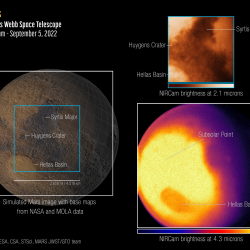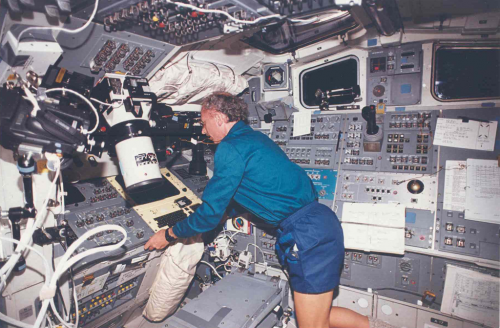Space mission for a better understanding of Earth's atmosphere
In 1992 Dirk Frimout, the first Belgian astronaut, flew on board the Space Shuttle STS-45 for the “Atlas1” space mission (Atmospheric Laboratory for Applications and Science) with the final goal to gain a better understanding of the interaction between the Sun and the Earth’s atmosphere.
ATLAS-1 was integrated in the cargo bay of the Space Shuttle Atlantis. During the mission, which lasted for eight days, Dirk Frimout accompanied the six American astronauts as a payload specialist. Of the twelve experiments on board, four were Belgian. The aim was to collect data about the atmospheric chemistry, solar radiation, plasmafysics and astronomy.
The experiments performed framed within the SPACELAB program.
Instruments on board Atlas-1 mission (1992)
Atmospheric sciences
- ALAE (Atmospheric Lyman-Alpha Emissions)
For the measurement of the amount of hydrogen and deuterium in the atmosphere.
- Grille Spectrometer (Belgian)
The objective of this spectrometer was the measurement of the chemical composition of the middle and upper atmosphere. The instrument measured solar infrared radiation absorbed by atmospheric constituents related to the ozone budget. Dirk Frimout participated in the development of this instrument.
- ATMOS (Atmospheric Trace Molecule Spectroscopy) (Belgian)
The ATMOS experiments and the Grille spectrometer made it possible to measure and map molecules, in particular ozone, in the middle atmosphere. This cartography is established by the measurement of infrared radiation absorbed by these molecules.
- MAS (Millimeter-Wave Atmospheric Sounder)
The MAS instrument was measuring the ozone concentration, the temperatures in the middle atmosphere and constituents influencing the ozone budget.
- ISO (Imaging Spectrometric Observatory)
The ISO experiment could measure the spectral characteristics of the atmospheric layer situated between 80 and 600 kilometres, in order to determine the composition of the atmosphere.
Solar physics
- ACR and SOLCON (Active Cavity Radiometer) and (Measurement of Solar Constant)(Belgian)
Both experiments enable scientists to measure the total amount of energy of solar origin. This is particularly important for climate studies.
- SOLSPEC and SUSIM (Solar Spectrum Measurement)(Belgian) and (Spectral Irradiance Monitor)
Both instruments measure the variability of the energy emitted by the Sun, which has an influence on the atmospheric chemistry. This spectral information is necessary for the study of atmospheric reactions on different altitudes.
Plasma physics
- AEPI (Atmospheric Emissions Photometric Imaging)
Scientists use this experiment to study the natural polar lights (which originate after the collision of atoms and molecules in the atmosphere) and the artificial polar lights of the Japanese SEPAC experiment.
- SEPAC (Space Experiments with Particle Accelerators)
Experiment for measuring the electric exchange between the space shuttle and the ionosphere.
- ENAP (Energetic Neutral Atom Precipitation)
Experiment for the study of the magnetosphere.
- FAUST (Far Ultraviolet Space Telescope)
Experiment to study cosmic sources of the ultraviolet radiation that cannot be observed on Earth. An improved knowledge of these sources is necessary for a better understanding of the life cycle of stars and star systems in space.



